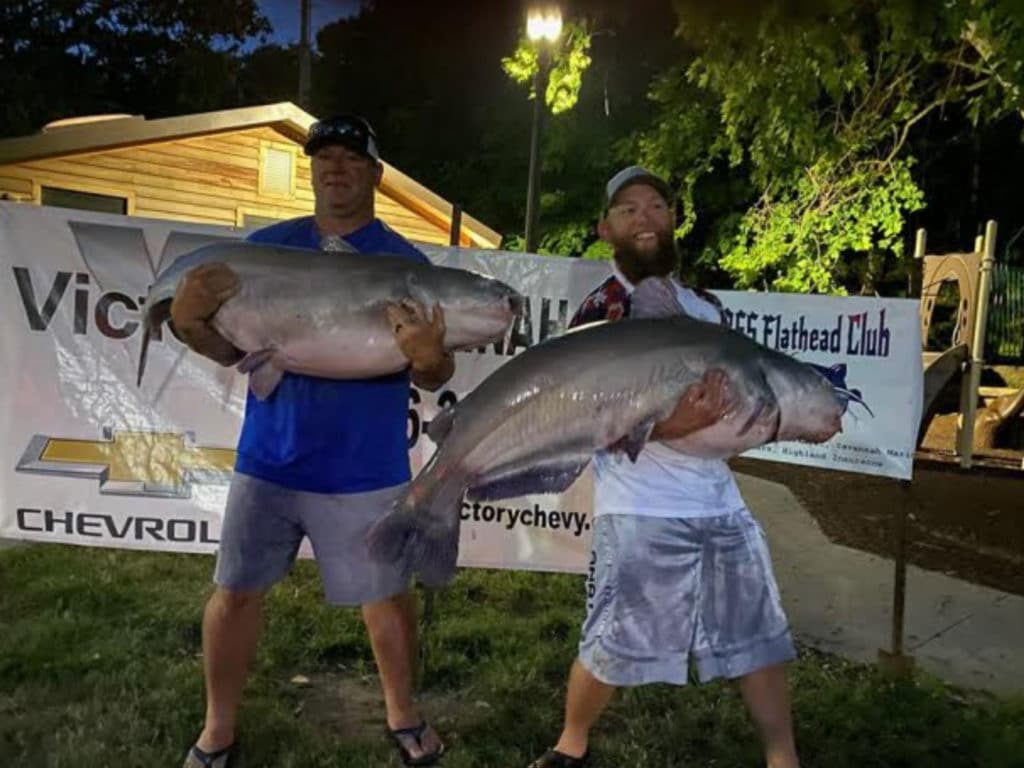
The Pennsylvania Fish and Boat Commission just stocked 13,000 blue catfish fingerlings in the 4-inch range in the Ohio River near Pittsburgh. They were put in at a place called “The Point,” where the Allegheny and Monongahela rivers merge to form the Ohio River, which flows nearly 1000 miles west, emptying into the Mississippi River at Cairo, Illinois.
More fingerling stockings of blue cats are slated in the Ohio River at other locations not far from Pittsburgh, including near the towns of Leetsdale and Monaca.
Blue cats are ravenous predators, feeding on fish and about everything else they can consume, and according to fisheries folks can attain weights to over 60 pounds in less than a decade.
Blue cats can weigh well over 100 pounds, with the IGFA All-Tackle record of 143-pounds caught from Kerr Lake, Va. in June 2011 by angler Richard Anderson.
Most of the biggest blues in the triple digit weight range come from Southern rivers and reservoirs where it’s warm and the growing season is long. The catfish forage base is big in such places, so blue cats can eat their fill and grow to gargantuan size.
But big blues surely are on tap for Ohio River anglers in Pennsylvania and other nearby Northern states, resulting from the recent fingerling stocks by biologists.
Pennsylvania fisheries manager Gary Smith told the Pittsburgh Post-Gazette that the blue cat stocking goal is to return the fish to its original range in the Ohio River and its tributaries. Smith says blue cats aren’t native to Pennsylvania lakes and there are no plans for stockings in such waters.
“This is a big project for us,” he told the Post-Gazette. “It’s restoring a major predator back to its historic range for the first time in generations. It’s an important game species — anglers are going to love this.”
Concerns about blue cats competing with other native species isn’t a concern to state biologists, who say there is abundant food for all species.
“They all occupy different areas of the water,” Smith said. “Blues are open-water feeders — they want to be out in the current going after smaller fish. Flatheads are deeper, and muskies, walleye and bass all have their preferred types of water. For the most part, they won’t be feeding in each other’s areas.”








